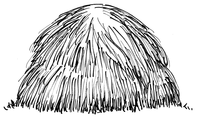The Resurrection of May Dancing
Dear old and new friends,
Once there was an Abbot of a Zen Monastery who vowed never again to walk across the bridge that spanned the deep chasm between his monastery and the outside world. One day two old friends came to his monastery to visit him, and the three had a big feast with many cups of Saki. When it was time for his friends to leave, the abbot walked with them down to the bridge. The three friends were merrily recalling old times and before they realized it, they had crossed the bridge! Laughing his friends shouted, “Hey, you just broke your vow!” The abbot joined them in their giddy hilarity as the three hugged one another to keep from falling into the gorge.
Instead of being deep in remorse and guilt at breaking his vow the abbot responded humorously at how Life often is triumphant over our human plans. His ability to laugh heartily at himself and at life’s incongruities was an expression of the Zen principle of “Mu.” It teaches whenever our plans are overturned we should embrace that reality as simply being part of Life’s spur-of-the-moment dance. Daily life isn’t some well-organized parade; it is an unscheduled lively dance even in chaotic events. Am I saying that when things go wrong we should just go with the flow? No, only dead fish go with the flow! Whenever next the rug is pulled out from beneath you, don’t get angry or accept the calamity stoically, instead dance a lively polka with your predicament.
Since ancient times the month of May and dancing have been lively companions. A young slender tree with its branches pruned except for a green bunch of them at the very top became the May Pole of a spring fertility ritual. For continuous centuries during May a multicolored striped pole was erected to which long colorful ribbons were tied. The ends of these ribbons were held by young people as they merrily danced around and around the pole celebrating the explosion of new life in creation. The Mechanized Age judged May Poles incompatible! Rare in our times are May Pole dances except in a few kindergartens, since the custodians and celebrants of ancient rituals are small children.
Regardless how old or arthritic we are, let us revive the prehistoric pleasure of dancing, even if only symbolically. Friedrich Nietzsche said, “You must have chaos within you to give birth to a dancing star”—to which I add, “Chaos in your life should give birth to you as a dancing star.” Chaos equals the unexpected, accidents, setbacks and even falling in love—anything that causes havoc and disorder. In creative ways the chaos of change is crucial to a new and unique creation.
So when next Life throws a monkey wrench into your plans you can echo the Scottish poet Robert Burns, “The best laid schemes o’ Mice an’ Men gang aft a-gley (often go astray)” while you do a brief Scottish reel, Irish jig or tango.




 RSS Feed
RSS Feed